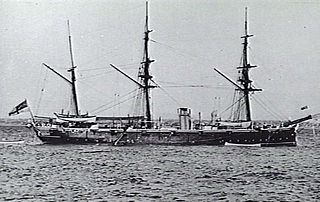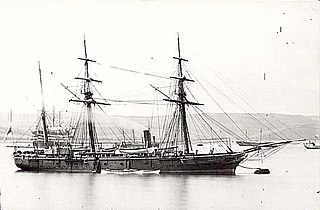
A clipper was a type of mid-19th-century merchant sailing vessel, designed for speed. Clippers were generally narrow for their length, small by later 19th-century standards, could carry limited bulk freight, and had a large total sail area. "Clipper" does not refer to a specific sailplan; clippers may be schooners, brigs, brigantines, etc., as well as full-rigged ships. Clippers were mostly constructed in British and American shipyards, although France, Brazil, the Netherlands, and other nations also produced some. Clippers sailed all over the world, primarily on the trade routes between the United Kingdom and China, in transatlantic trade, and on the New York-to-San Francisco route around Cape Horn during the California Gold Rush. Dutch clippers were built beginning in the 1850s for the tea trade and passenger service to Java.

Cutty Sark is a British clipper ship. Built on the River Leven, Dumbarton, Scotland in 1869 for the Jock Willis Shipping Line, she was one of the last tea clippers to be built and one of the fastest, at the end of a long period of design development for this type of vessel, which ended as steamships took over their routes. She was named after the short shirt of the fictional witch in Robert Burns' poem Tam o' Shanter, first published in 1791.

Thermopylae was an extreme composite clipper ship built in 1868 by Walter Hood & Co of Aberdeen, to the design of Bernard Waymouth of London. Designed for the China tea trade, she set a speed record on her maiden voyage to Melbourne of 63 days, still the fastest trip under sail.

Carvel built or carvel planking is a method of boat building in which hull planks are laid edge to edge and fastened to a robust frame, thereby forming a smooth surface. Traditionally the planks are neither attached to, nor slotted into, each other, having only a caulking sealant between the planks to keep water out. Modern carvel builders may attach the planks to each other with glues and fixings. It is a "frame first" method of hull construction, where the shape is determined by the framework onto which the planks are fixed. This is in contrast to "plank first" or "shell first" methods, where the outer skin of the hull is made and then reinforced by the insertion of timbers that are fitted to that shape. The most common modern "plank first" method is clinker construction; in the classical period "plank first" involved joining the edges of planks with mortise and tenon joints within the thickness of the timbers, superficially giving the smooth-hull appearance of carvel construction, but achieved by entirely different means.

Iron-hulled sailing ships represented the final evolution of sailing ships at the end of the age of sail. They were built to carry bulk cargo for long distances in the nineteenth and early twentieth centuries. They were the largest of merchant sailing ships, with three to five masts and square sails, as well as other sail plans. They carried lumber, guano, grain or ore between continents. Later examples had steel hulls. They are sometimes referred to as "windjammers" or "tall ships". Several survive, variously operating as school ships, museum ships, restaurant ships, and cruise ships.

City of Adelaide is a clipper ship, built in Sunderland, England, and launched on 7 May 1864. It was built by Pile, Hay and Co. to transport passengers and goods between Britain and Australia. Between 1864 and 1887 she made 23 annual return voyages from London and Plymouth to Adelaide, South Australia and played an important part in the immigration of Australia. On the return voyages she carried passengers, wool, and copper from Adelaide and Port Augusta to London. From 1869 to 1885 she was part of Harrold Brothers' "Adelaide Line" of clippers.

Copper sheathing is a method for protecting the hull of a wooden vessel from attack by shipworm, barnacles and other marine growth through the use of copper plates affixed to the surface of the hull, below the waterline. It was pioneered and developed by the Royal Navy during the 18th century. In antiquity, ancient Greeks used lead plates to protect the underwater hull.
Composite construction is a generic term to describe any building construction involving multiple dissimilar materials. Composite construction is often used in building aircraft, watercraft, and building construction. There are several reasons to use composite materials including increased strength, aesthetics, and environmental sustainability.

William Pile was a British shipbuilder. 'His genius was displayed in the building of ships, wherein he was not excelled. As Watt was great as a builder of engines; and Stephenson was great as a builder of railways; so William Pile was great as a builder of ships.'

Ambassador is a United Kingdom tea clipper built in 1869. She was a composite clipper, built with wooden planking over an iron skeleton and was W. Lund & Co's first tea clipper. She is now a beached wreck in southern Chile.

Westward Ho! was an 1852 clipper that made two very fast passages to San Francisco; 100 days from Boston and New York City. She had a very close race with Neptune's Car, and ended her days in the coolie trade.
A medium clipper is a type of clipper designed for both cargo carrying capacity and speed. An evolutionary adaptation of the extreme clipper, the medium clipper had been invented by 1851, when the hull type appeared in U.S. shipyards. Medium clippers continued to be built until 1873, when Pilgrim, one of the last known medium clipper ships to be built, was launched by Joshua T. Foster from the shipyards of Medford, Massachusetts.

HMS Pylades was a Satellite-class composite screw sloop of the Royal Navy, built at Sheerness Dockyard and launched on 5 November 1884. She was later reclassified as a corvette and was the last corvette built for the Royal Navy until the Second World War.

The Arab-class gunvessels were a pair of composite gunboats built for the Royal Navy in the mid-1870s.

The Riouw class was a class of four steam screw gunvessels of the Royal Netherlands Navy. They were the first composite built ships of the Dutch navy.

Darra was a barque-rigged clipper, built at Aberdeen and launched in 1865.

Scottish Maid was a Scottish packet boat, a two-masted wooden schooner, built at Alexander Hall and Sons' boatyard in 1839 for the Aberdeen Line. She has been described as the first clipper vessel to be built in Britain. Her design of sharp, forward-raked bow, later called the "clipper bow" or Aberdeen bow, pioneered a succession of larger clipper ships with many also built in Aberdeen on Scotland's northeast coast.














